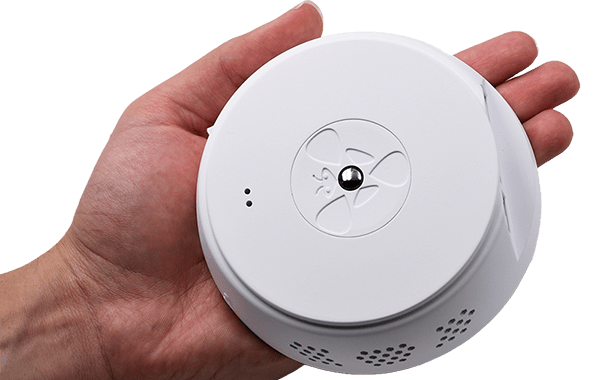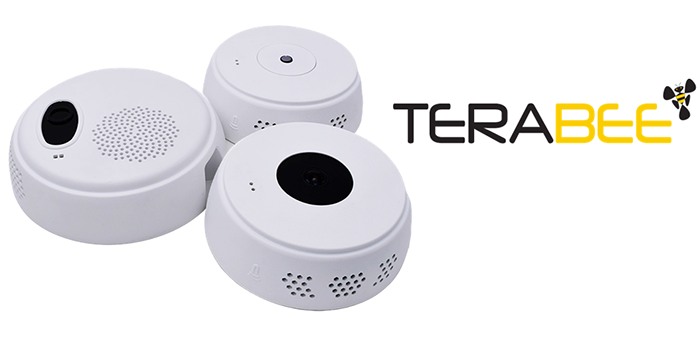In today’s evolving building landscape, the need for efficient space utilization and privacy-compliant solutions is paramount, especially within confined areas.
Thermal occupancy devices have emerged as a game-changer in managing smaller spaces effectively while addressing concerns related to privacy and GDPR requirements.
Introducing thermal occupancy sensors
Thermal occupancy sensors, such as the Terabee People Occupancy Counting device, harness thermal imaging technology to detect human presence and count occupants accurately within spaces as small as 8 m x 8 m. These sensors utilize infrared radiation emitted by individuals, providing a non-intrusive, highly precise method of occupancy detection. With this technology, spaces can be optimized for maximum efficiency, allowing for better resource allocation and energy management.
People Occupancy Counting sensor

Terabee’s People Occupancy Counting sensor stands out for its cutting-edge features. Utilizing advanced thermal imaging, this sensor offers real-time, high-precision occupancy monitoring. With its compact design and easy installation, it seamlessly integrates into various environments, from offices and meeting rooms to public areas, enhancing space management capabilities. The device can focus on multiple regions of interest, up to eight, to monitor or exclude specific areas.
The sensor’s ability to count occupants accurately without capturing identifiable personal information ensures privacy compliance, aligning with GDPR regulations and respecting individuals’ rights to privacy within monitored spaces. Moreover it ensures precise occupancy tracking in all light conditions. This is ideal for fine-tuning energy management, optimizing space utilization and automating building operations.
Privacy and GDPR compliance benefits
Unlike traditional surveillance systems or RGB devices, thermal occupancy sensors do not capture or store images of individuals. Instead, they focus on detecting heat signatures, ensuring anonymity and safeguarding personal identities. This approach mitigates concerns about intrusive monitoring and potential data breaches, enhancing privacy protection within confined spaces.
Real-world applications
The versatility of thermal occupancy sensors extends to various applications. In office settings, these sensors aid in workspace optimization, enabling better utilization of meeting rooms or workstations.
Their ability to accurately count occupants, show if a space is occupied or not, ensure GDPR compliance, and maintain privacy within confined areas are useful benefits in efficient space management.
Real-world applications
The adoption of thermal occupancy sensors is gaining traction across various sectors, including commercial buildings, educational institutions, healthcare facilities, and residential spaces.

By accurately monitoring foot traffic and occupancy levels, universities can identify opportunities to reduce energy consumption, optimize facility maintenance schedules, and allocate resources more efficiently, ultimately leading to cost savings in the long run.
As Terabee people counters provide real-time data on the number of people within a designated space within a higher education or university environment, heating, air conditioning and ventilation (HVAC) and lighting systems can make use of this data, linked via the building management system (BMS) to enable energy savings and reduced energy costs. See the article on how Feedback Solutions has enabled energy savings of 40% or more of HVAC-related energy consumption in a U.S. university campus, coming from reduced fan speeds and optimization of the volume of outside air being heated or cooled.
For instance, in office spaces, these sensors are ideal to measure meeting room occupancy and to know if a room is occupied or not. In educational settings, these sensors are integrated into classroom environments to regulate lighting and climate control systems based on occupancy, leading to reduced energy wastage during unoccupied periods.
Similarly, in auditoriums and reception halls, the data from these sensors can be used for informed decision-making and so contribute to reducing HVAC-related energy use while respecting occupants’ privacy.
Integration with existing systems
Terabee people counters are designed to seamlessly integrate with existing infrastructure and systems, making implementation straightforward for educational facilities. Whether it be integrating with access control systems, building management systems, or data analytics platforms, these counters offer compatibility and flexibility, allowing universities to leverage existing investments while enhancing their operational capabilities.
The People Flow Counting L-XL LoRa and People Flow Counting M 2.0 LoRa devices use LoRaWAN, which eliminates the need to install PoE cables or connect to the main IT system. This makes them ideal sensors for historic buildings which can be common in universities. The LoRa-enabled solution avoids the need to retrofit Ethernet cabling, which can be both expensive and time-consuming.

People Occupancy Counting sensor from Terabee
Terabee’s People Occupancy Counting sensor stands out for its cutting-edge features.

Utilizing advanced thermal imaging, this sensor offers real-time, high-precision occupancy monitoring. With its compact design and easy installation, it seamlessly integrates into various environments, from offices and meeting spaces to reception halls, enhancing space management capabilities. The device can focus on multiple regions of interest, up to eight, to monitor or exclude specific areas.
The sensor’s ability to count occupants accurately without capturing personal identifiable information (PII) ensures privacy compliance, aligning with GDPR regulations and respecting individuals’ rights to privacy within monitored spaces. Moreover it ensures precise occupancy tracking in all light conditions. This is ideal for fine-tuning energy management, optimizing space utilization and automating building operations.
Q&A
Can Terabee people occupancy counting technology be integrated with existing building management systems, and what are the steps involved in this process?
Terabee’s people occupancy counting technology can be integrated with existing BMS. The process typically involves connecting the Terabee sensors to the BMS via standard protocols like Modbus or BACnet. Detailed integration instructions are provided by Terabee, ensuring a seamless integration process.
Are there any limitations or challenges associated with implementing Terabee people counting devices in different types of environments, such as varying lighting conditions or architectural layouts?
While Terabee’s people counting devices primarily use Time-of-Flight and thermal infrared technology, which are less affected by lighting conditions, there can still be challenges in certain environments such as very bright sunlight. Additionally, architectural layouts with obstacles or reflective surfaces may impact the accuracy of the sensors. Terabee provides guidance on sensor placement and environmental considerations to mitigate these challenges.
How does Terabee ensure the privacy and security of the data collected through their people occupancy counting technology, especially in light of increasing concerns about data protection and privacy regulations?
Terabee ensures privacy and security by designing their sensors to collect only non-personally identifiable information (PII) through thermal infrared technology and Time-of-Flight technology. This means that the sensors do not capture images or any identifiable features of individuals, thus eliminating privacy concerns associated with traditional camera-based systems.
How easily can Terabee’s people occupancy counting system scale to accommodate buildings of different sizes and layouts? Are there any limitations in terms of the number of sensors that can be deployed or the coverage area they can effectively monitor?
Scalability and flexibility of Terabee People Occupancy Counting: the people occupancy counting sensor is designed to be highly scalable and flexible to accommodate buildings of various sizes and layouts. The system can easily scale by adding additional sensors as needed, and there are typically no limitations on the number of sensors that can be deployed within a building. Additionally, Terabee offers people flow counting sensors with varying coverage ranges to suit different space requirements, ensuring effective monitoring across diverse environments.
What kind of maintenance and support services does Terabee offer for their people occupancy counting devices? Are there any ongoing calibration requirements or software updates needed to ensure accurate and reliable performance over time?
Terabee provides comprehensive maintenance and support services to ensure the long-term performance of their people occupancy counting devices. This includes firmware updates to ensure compatibility with the latest technologies and security standards. Additionally, Terabee offers technical support and troubleshooting assistance to address any issues that may arise, ensuring uninterrupted operation and maximum uptime for their customers.

